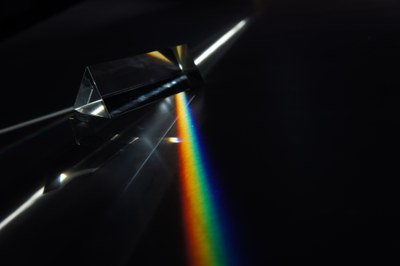Photonics Group (AGP)
The Quantum Optics and Photonics division is one of the largest DPG divisions and comprises scientists, teachers and industrial physicists who deal with quantum optics and photonics. The Quantum Optics Group and the Photonics Group belong to this division.
 |
 |
Abb.: Farbzerlegung von weißem Licht durch ein Prisma.
Quelle: Public Domain


Photonics for the society of tomorrow
Light enables life on Earth since primeval times. For humans, natural light first was merely a means to brighten darkness. The classical optics gave rise to glasses, microsopes or binoculars. It was only with the development of modern optics that the full potential of the medium light was discovered - from the laser to optical memory and to communication technologies.
In the meanwhile, the control of light has reached a point that justifies the expectation that light technologies will become equally important as electronics. Thus, the goal of photonics is uncovering the full potential of using light for information and communication technologies. Photonics deals with topics from classical optics, nonlinear optics and quantum optics in order to develop new applications in technology, biology and medicine.
Photonics as a key technology
Photonics plays a key role in the solution of important problems in communications, production, biology and nano technology. The usage of light with all its properties and its targeted use as carrier of information as well as to analyse and modify matter will thus be of major importance in the next decades. This affects the generation of light as well as its guidance and its spectral, spatial and temporal shaping. Especially the research on the propagation of light in complex structures gains more and more importance. This comprises the control of propagation properties by nonlinear interactions and their modification by interaction with complex geometrical structures as well as a combination of both scenarios. These structures can depict new artificial media (effective media in the sub-wavelength regime or photonic crystals with different dimensions in the wavelength regime) or serve as light conducting structures in the super-wavelength regime.